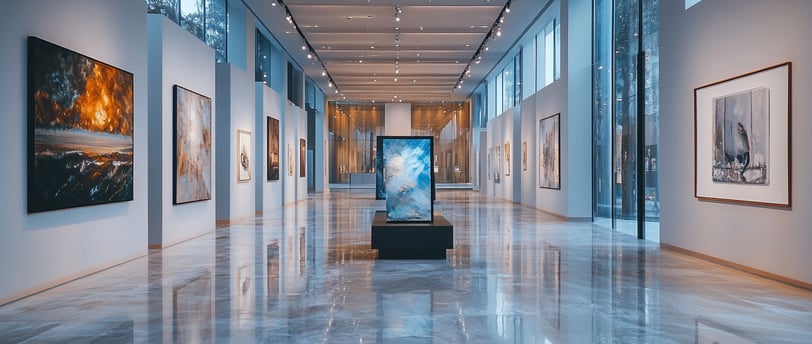The Evolution and Impact of AI Art
Explore the fascinating world of AI-generated art. Learn how artificial intelligence is reshaping creativity through innovative techniques, from style transfer to generative models. Discover its evolution, impact on the art market, and the ethical debates it sparks. Whether you're an artist or simply curious about AI, this article unveils the future of art and design.
INSIGHTS
12/21/20241 min read


Introduction
Artificial intelligence is making waves in countless industries, and the art world is no different. AI-generated art is transforming how we create and appreciate visual works. This article looks at how AI art has developed, the techniques behind it, and its growing influence.
The Evolution of AI Art
AI art began as an experiment combining technology and creativity. Early examples featured simple patterns and replications of existing styles. As machine learning and neural networks advanced, AI art became far more sophisticated.
A major turning point came in 2014 with the invention of Generative Adversarial Networks (GANs) by Ian Goodfellow. GANs use two neural networks—one to create images and another to evaluate them. This process allows AI to produce stunning, lifelike, and imaginative art pieces.
Techniques in AI Art
AI artists use different methods to create their work:
Style Transfer: This technique applies the look of one image to another, letting artists produce pieces inspired by famous styles like Van Gogh or Picasso.
Generative Models: Programs like GANs analyze patterns in existing art and generate entirely new pieces, often with surprising results.
Neural Doodle: With this method, users sketch outlines, and the AI fills in details, turning rough ideas into polished works.
The Impact of AI Art
AI art has brought major changes to the creative world:
Accessibility: AI tools make art more approachable, enabling people without formal training to create meaningful pieces.
Collaboration: Many artists work alongside AI, using it to enhance their visions or experiment with new ideas.
Market Recognition: AI-generated art is gaining attention. In 2018, "Portrait of Edmond de Belamy" sold for $432,500, proving that AI art has commercial value.
Ethical Questions: AI art raises questions about ownership, originality, and the role of human creativity. These debates continue to shape the field.
Conclusion
AI art blends technology and creativity, challenging traditional ideas about art while opening new possibilities. As technology evolves, AI will continue to push boundaries and inspire fresh ways of thinking about art and design.


